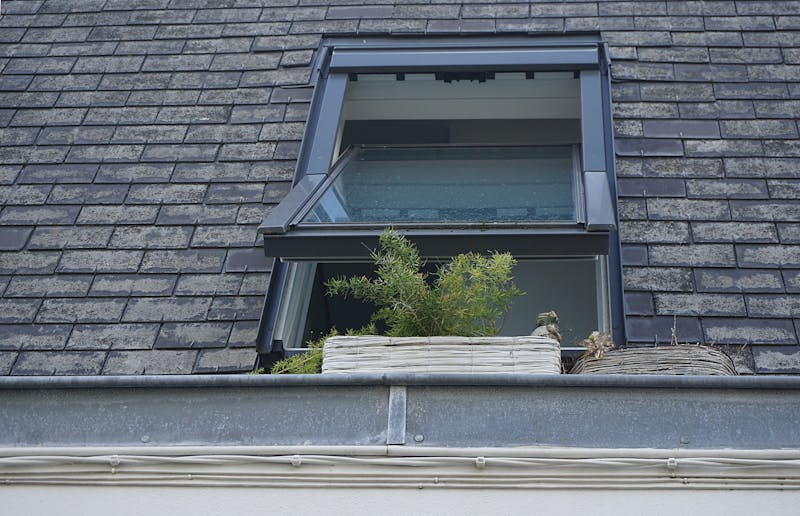The Importance of Proper Attic Ventilation for Roof Longevity

Proper attic ventilation is a critical factor in maintaining the longevity of a roof. Inadequate ventilation can lead to moisture buildup, heat accumulation, and ultimately, significant damage to roofing materials. Understanding how attic ventilation works and its benefits can help homeowners protect their investment and avoid costly repairs.
Understanding Attic Ventilation
Attic ventilation involves the circulation of air through the attic space to prevent heat and moisture buildup. This is typically achieved using intake vents placed at the eaves or soffits and exhaust vents located near the roof ridge. The goal is to create a continuous flow of air that keeps the attic at a stable temperature and humidity level.
Effective attic ventilation systems include ridge vents, gable vents, and soffit vents. Each type of vent plays a specific role in ensuring proper air circulation. For example, ridge vents are installed along the peak of the roof and allow warm air to escape, while soffit vents draw cooler air in from outside.
The combination of these vents creates a balanced system that helps maintain a healthy attic environment. According to the U.S. Department of Energy, proper ventilation can extend the life of roofing materials by reducing heat buildup and preventing moisture-related issues such as mold and mildew (energy.gov).
The Consequences of Poor Attic Ventilation
Without adequate ventilation, an attic can become excessively hot during the summer months. This heat can radiate into living spaces below, causing discomfort and increasing cooling costs. Additionally, excessive heat can cause shingles to deteriorate prematurely, leading to leaks and other structural problems.
Moisture buildup is another significant issue caused by poor attic ventilation. During colder months, warm air from living spaces can rise into the attic, where it condenses on cold surfaces. This moisture can lead to wood rot, rust on metal components, and insulation damage.
A study by the National Roofing Contractors Association (NRCA) highlights that inadequate ventilation is a common cause of roof failure. Ensuring proper airflow in the attic space can mitigate these risks and promote the longevity of roofing materials (nrca.net).
Benefits of Proper Attic Ventilation
Proper attic ventilation offers numerous benefits that contribute to roof longevity and overall home health. These include:
- Temperature Regulation: Ventilation helps maintain consistent temperatures in the attic, reducing stress on roofing materials.
- Moisture Control: Effective airflow prevents moisture accumulation, protecting against mold growth and wood rot.
- Energy Efficiency: A well-ventilated attic reduces cooling costs in summer by minimizing heat transfer to living spaces.
- Extended Roof Lifespan: Preventing heat and moisture damage helps extend the life of shingles and other roofing components.
These benefits underscore the importance of investing in a well-designed attic ventilation system. Homeowners should consider consulting with roofing professionals to assess their current ventilation setup and make any necessary improvements.
Types of Attic Vents
The most common types of attic vents include ridge vents, soffit vents, gable vents, and turbine vents. Each type serves a unique purpose in promoting proper airflow within the attic space.
| Type of Vent | Description | Benefits |
|---|---|---|
| Ridge Vents | Installed along the roof peak to allow hot air to escape. | Promotes continuous airflow; helps reduce heat buildup. |
| Soffit Vents | Located under the eaves to draw cooler air into the attic. | Aids in maintaining balanced air circulation; prevents moisture buildup. |
| Gable Vents | Installed on gable ends for additional exhaust or intake options. | Adds supplementary airflow; useful for large attics. |
| Turbine Vents | Mechanical vents that spin with wind power to increase airflow. | Enhances natural ventilation; effective in windy areas. |
Installation Tips for Homeowners
Proper installation of attic vents is crucial for maximizing their effectiveness. Here are some tips for homeowners considering vent installation or upgrades:
- Select Appropriate Vents: Choose vents that suit your specific roof design and climate conditions.
- Aim for Balance: Ensure an equal number of intake and exhaust vents to promote balanced airflow.
- Avoid Blockages: Keep vents clear of insulation or debris that could impede airflow.
- Consult Professionals: Seek advice from roofing experts to ensure proper installation and function.
The importance of proper attic ventilation cannot be overstated when it comes to maintaining roof longevity. Adequate ventilation helps regulate temperatures, control moisture levels, enhance energy efficiency, and extend the lifespan of roofing materials.
Ensuring your attic has proper ventilation is an investment in both your home's comfort and structural integrity. Regular inspections and consultations with roofing professionals will help maintain optimal conditions in your attic space. Implementing these strategies will not only enhance your home's energy efficiency but also preserve its value over time.
